Various fandom things, writing adjacent things, history and mythology, assorted other nonsense.
Last active 2 hours ago
Don't wanna be here? Send us removal request.
Text


fucking brutal section headings from the herman melville wikipedia page
10K notes
·
View notes
Text
whenever i see people say “i’m watching (insert show name here) for the first time. which episodes should i skip?” i get so annoyed. NONE OF THEM. YOU ARE WATCHING THE SHOW FOR THE FIRST TIME. WHY ARE YOU SKIPPING EPISODES
8K notes
·
View notes
Text
kpop demon hunters from the perspective of the fans is so fucking funny because what do you mean the biggest kpop girl group in korea is beefing with and wrote a devastating diss track about a brand new boy band that debuted like 4 weeks ago and only has one song out
28K notes
·
View notes
Text
KPop Demon Hunters is a good movie because it has something for everybody:
-Famous girl group that's allowed to be good at what they do & still act silly
-Stylized animation that isn't scared to make characters ugly/isn't scared to show girls without makeup
-Queer undertones & generational trauma in one ("Why couldn't you love me?"/"All of me")
-Friendships are just as important as romance, if not more
-Enemies to lovers based on something more than the MC and antagonist finding each other attractive
-The girls have a relationship that can be interpreted however you want and nobody is wrong
-Songs that are still good outside of the plot's context
-Social commentary on the irl K-Pop industry, particularly how boy bands tend to have it easier than girl groups
9K notes
·
View notes
Text
“no matter how badly you think you’re doing it, someone else has done it a lot worse and been fine” is applicable to a wide, wide range of things and i say it to myself all the time
170K notes
·
View notes
Text
They should invent a being a writer that doesn't come with being isolated and diminishing returns on what you are given back compared to how much you give
3K notes
·
View notes
Text
5 Tiny Writing Tips That Aren’t Talked About Enough (but work for me)
These are some lowkey underrated tips I’ve seen floating around writing communities — the kind that don’t get flashy attention but seriously changed how I write.
1. Put “he/she/they” at the start of the sentence less often.
Try switching up your sentence rhythm. Instead of
“She walked to the window,”
try
“The window creaked open under her touch.”
Keeps it fresh and stops the paragraph from sounding like a checklist.
2. Don’t describe everything — describe what matters.
Instead of listing every detail in a room, pick 2–3 objects that say something.
“A half-drunk mug of tea and a knife on the table”
sets a way stronger tone than
“There was a wooden table, two chairs, and a shelf.”
3. Use beats instead of dialogue tags sometimes.
Instead of:
"I'm fine," she said.
Try:
"I'm fine." She wiped her hands on her skirt.
It helps shows emotion, and movement.
4. Write your first draft like no one will ever read it.
No pressure. No perfection. Just vibes. The point of draft one is to exist. Let it be messy and weird — future you will thank you for at least something to edit.
5. When stuck, ask: “What’s the most fun thing that could happen next?”
Not logical. Not realistic. FUN. It doesn’t have to stay — but chasing excitement can blast through writer’s block and give you ideas you actually want to write.
What’s a tip that unexpectedly helped with your writing? Let me know!! 🍒
13K notes
·
View notes
Text
best part of KPop Demon Hunters is all the ridiculous faces the girls make
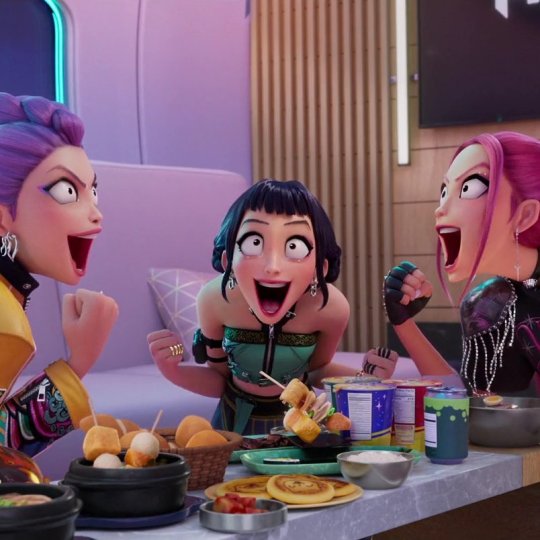













46K notes
·
View notes
Text
Ok, imagine you're comic accurate Clark Kent and you're a working-class immigrant raised on a farm. You grow up and dedicate your life to helping people while being a total malewife to your Pulitzer prize winner girlfriend. You're despised and targeted by an unethical, megalomaniacal billionaire who thinks his intellect and his power and his wealth entitles him to your inherent abilities and the adoration you've earned through years of nonstop altruism. YOU WERE CREATED BY TWO JEWISH MEN IN THE 1930S
And then people complain about a movie about you being too woke
17K notes
·
View notes
Text
In recent Supreme Court terms, Justices Elena Kagan, Sonia Sotomayor, and Ketanji Brown Jackson have issued defiant dissents that push back against a seemingly endless cascade of conservative opinions. The three tend to take somewhat different approaches. Kagan has typically focused on exposing the majority’s shoddy reasoning, Sotomayor has underscored its complicity in wrong, and Jackson has placed it within larger systems of oppression. One might think, just skimming the dissents, that everything is as it should be: The Court takes cases. It hears arguments, and it votes. Those on the losing end dissent. One can read the majority opinion and the dissent, and see reasonable people disagreeing courteously and reasonably. That’s how the law is supposed to work, right? All is in order, same as it has been since the 1920s at least.
But look closer at the dissents, and it is evident that, whatever their differences, the three liberals agree on an overarching theme: They no longer see the Court playing by the old game of constitutional law. Their dissents suggest anything but an assumption of business as usual. The three liberal justices are writing about a majority unbound by law and its tiresome technicalities—about a majority that is no longer doing law as that term has come to be understood.
In other words, the dissents are screaming that the old game of law is no more; we’re in a different world, they say. Their critiques of incoherence, internal contradiction, and factual obfuscation are all in service of this.
The practice—and the art—of a Supreme Court dissenting opinion is relatively new. In the first four years of the great Chief Justice John Marshall’s tenure, just one single-sentence concurrence was issued, and no dissents. Until 1928, about 70 percent of all cases decided had neither a dissent nor a concurrence. Only in the mid-20th century did dissenting really take off.
In her first years on the Court, Kagan dissented, but rarely. After the 2017 appointment of Justice Neil Gorsuch, she started to write more frequently in disagreement, publishing 30 dissents in just the five years after his appointment. Her rhetoric has slowly dialed up. In her 2019 dissent from a decision to green-light partisan gerrymanders, she wrote with “respect but deep sadness” about the “tragically wrong” outcome. Her dissent from a decision two years later gutting the Voting Rights Act shifted into outrage at a majority that “writes its own set of rules” rather than following the law. And in a 2024 dissent, she lamented the Court’s “power grab” in disregarding the precedent that has long commanded deference from judges to federal agencies. Time and again, her dissents excoriate the conservative majority’s unwillingness to follow its own legalistic rules.
Sotomayor likewise doesn’t hold back, but her most powerful lines of attack focus on the Court’s complicity in wrongdoing. Take her dissent in United States v. Higgs, a death-penalty case. Eschewing cold formality, she begins with a list of names: The 13 men who, in the months before that opinion, were executed without “orderly process,” and so probably unlawfully. In blunt terms, she warned, “This is not justice.”
Similarly, just a few weeks ago, in the case about the nationwide injunction preventing Donald Trump’s birthright-citizenship executive order from taking effect, Sotomayor (rightly) warned that “no right is safe” with a majority in the habit of rewarding “gamesmanship” when it comes to a president to whom the conservative justices are politically sympathetic. Her opinion is remarkable not just for how carefully and comprehensively she excoriates the Trump administration; she also calls out her fellow justices, noting that the decision was “not the first time the Court closes its eyes to noncompliance, nor, I fear, will it be the last.” The Court, and not just a lawless administration, is the problem here.
Such a candid expression of distrust is a dramatic change in the way that dissents work: There was a time when Ruth Bader Ginsburg would write respectfully of how Antonin Scalia’s “attention-grabbing” dissent from one of her equality decisions made that writing “so much better than my first, second, and at least a dozen more drafts.” (I clerked for Ginsburg in 2003.) It seems unlikely that Sotomayor’s writing is intended to, or ever could, shape or sharpen the majority’s writing.
Justices in the past have avoided such elbowed writings because their benefits have been seen as smaller than their risks. The language Sotomayor uses, for example, might suggest to the casual reader that the Court upheld the birthright-citizenship order, rather than just dinging a specific procedural pathway for challenging it. Sometimes a dissent can make a bad decision seem even worse than it really is. This might be advantageous, if alarm is your goal, but it can come at a cost in terms of trust and clarity.
Dissents can be self-defeating in a second way: A stinging dissent can lead to a loss of trust among the justices themselves. The dissenter might then have a harder time persuading a colleague who’s on the fence in a later case. A hint of this dynamic is already evident in some of the recent majority opinions.
The newest appointee, Jackson, has gone a step beyond Sotomayor. She doesn’t just tell us what’s rotten at the Court; she also situates those wrongs within the larger social and political landscape. Judging, she shows, is not an exercise in pure and ethereal theory, nested in abstraction. It is an act against and within the world.
Perhaps the best example of Jackson’s method is her extraordinary and far-ranging dissent in the affirmative-action case of Students for Fair Admissions v. Harvard. It starts by describing reality, specifically the “gulf-sized race-based gaps” that “exist with respect to the health, wealth, and well-being of American citizens.” Writing in plain terms stripped of legalese, Jackson imagines “two college applicants from North Carolina, John and James” who could alike “trace their family’s North Carolina roots to the year of UNC’s founding in 1789.” Then, she scrupulously documents the historical ways in which John and James inevitably and tragically stood a “gulf” apart thanks to official and social racism. Her argument is not just about the narrow or immediate consequences of an opinion; it describes how the Court’s ruling cuts into the abiding wounds of our racialized past (and present), renewing bleeding.
This year, Jackson again issued a decision remarkable for how it placed the dispute at hand into a concrete context. This was in the birthright-citizenship case, where what was technically at issue was the question of nationwide injunctions. But in doing more than merely addressing the procedural issue, Jackson seemed to describe the administration’s effort to undo this bedrock American legal principle of citizenship as an “existential threat to the rule of law.” Her opinion speaks of “lawlessness” no fewer than eight times. In a remarkable footnote, she even highlights the “dual state” theory that I wrote about earlier this year, drawing attention to parallels between Trump’s America and 1930s Germany. Once again, Jackson showed that, unlike the majority, she understands the law not just as a series of separate, abstract points, but as a complex body of rules that add up to an integrated system, understood only by being taken in as a whole. Rules such as the limitation on nationwide injunctions do not exist in isolation: They have to be viewed in light of the other limits on presidential power—or, when it comes to the Roberts Court, their absence.
To what avail? Dissents, for all their glory, may have little power to change the law. Justice Oliver Wendell Holmes Jr., who served on the Court from 1902 to 1932, was known as the “Great Dissenter,” but less than 10 percent of his dissents ever found their way into law. Who today even remembers the powerful dissent of Justice Benjamin Curtis in the Dred Scott case? His insistence that Black Americans were “in every sense part of the people of the United States” made little difference. Only the arms and the sacrifice of the Civil War changed the law.
Even so, these writings matter. True, they aren’t about to change the hearts and minds of committed partisan ideologues. Samuel Alito, for example, barely changed his draft opinion that overturned Roe v. Wade after it was leaked to the public—a signal of how indifferent he was to criticism of his illogic, disregard for legal precedent, and callousness.
The deeper lesson of the dissents is not to be found in their piercing yet local critiques. It is in their struggle to redeem the practices of reason-giving and fidelity to facts against a worldview in which those practices count for less and less. How do you use reason to protest the eclipse of rationality? Surely that is a problem not just for the dissenters, but for all of us.
82 notes
·
View notes
Text
"The shift from the Afro-Caribbean zombie to the U.S. zombie is clear: in Caribbean folklore, people are scared of becoming zombies, whereas in U.S. narratives people are scared of zombies. This shift is significant because it maps the movement from the zombie as victim (Caribbean) to the zombie as an aggressive and terrifying monster who consumes human flesh (U.S.). In Haitian folklore, for instance, zombies do not physically threaten people; rather, the threat comes from the voduon practice whereby the sorcerer (master) subjugates the individual by robbing the victim of free will, language and cognition. The zombie is enslaved."
— Justin D. Edwards, "Mapping Tropical Gothic in the Americas" in Tropical Gothic in Literature and Culture.
Follow Diary of a Philosopher for more quotes!
36K notes
·
View notes
Text

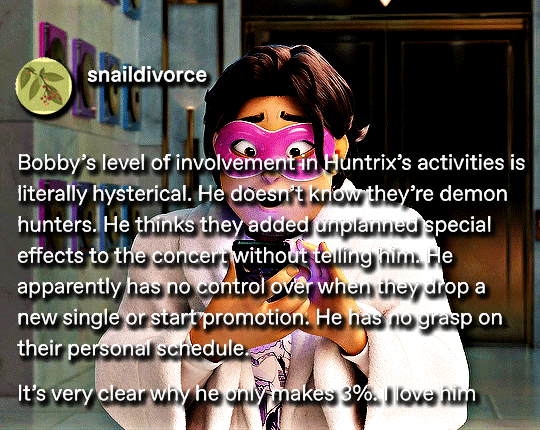


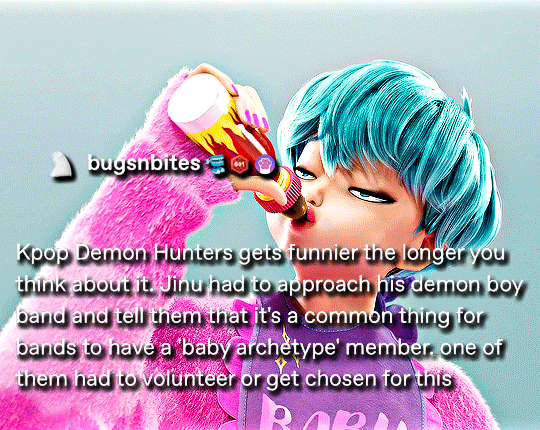
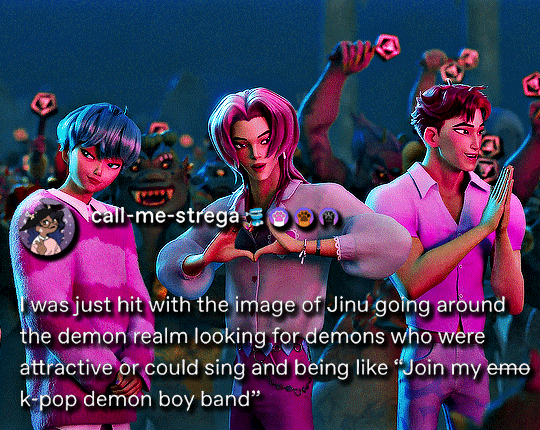
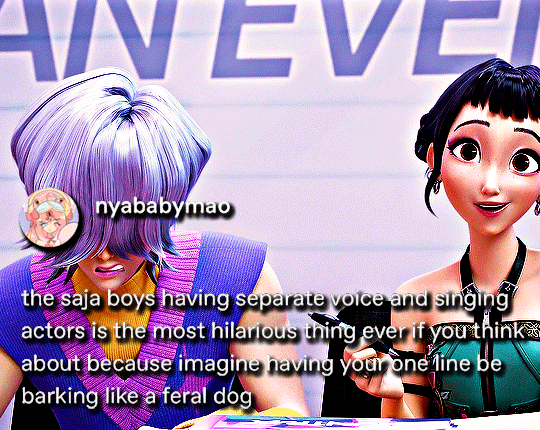
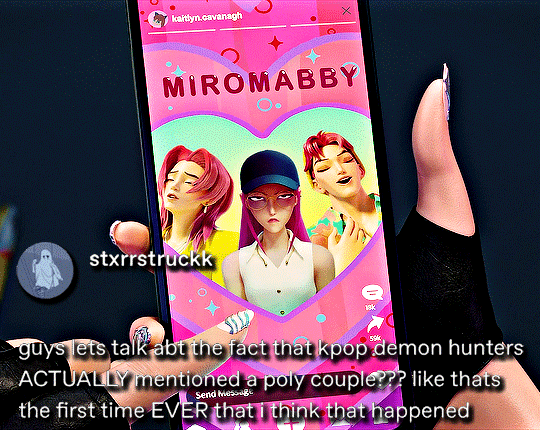
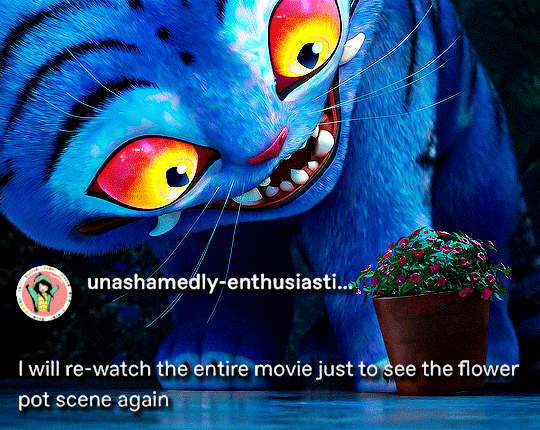
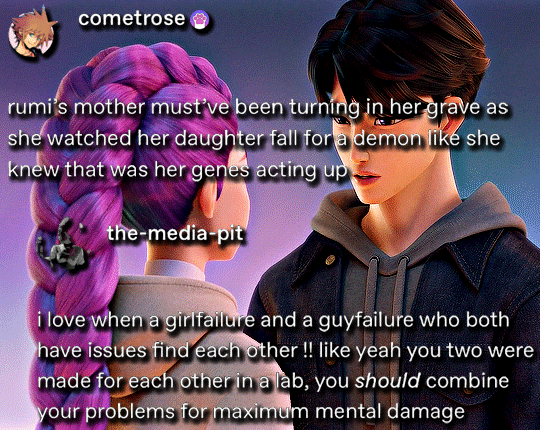
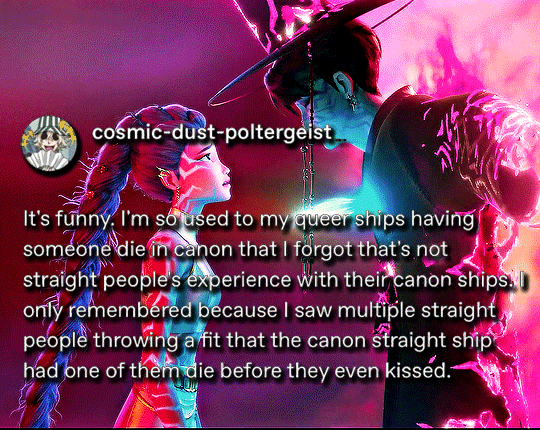

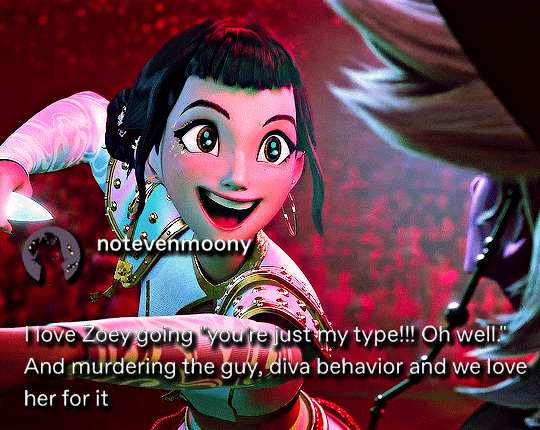
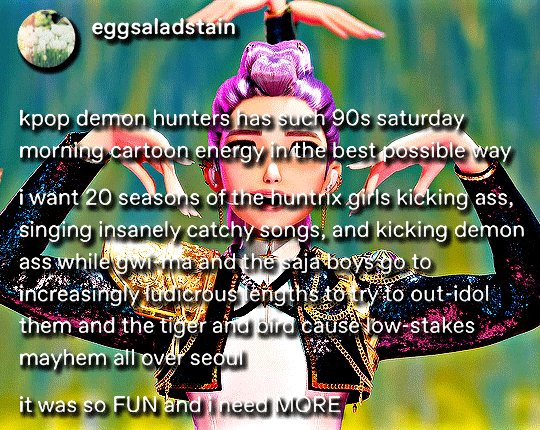

KPOP DEMON HUNTERS (2025) + TUMBLR REACTIONS
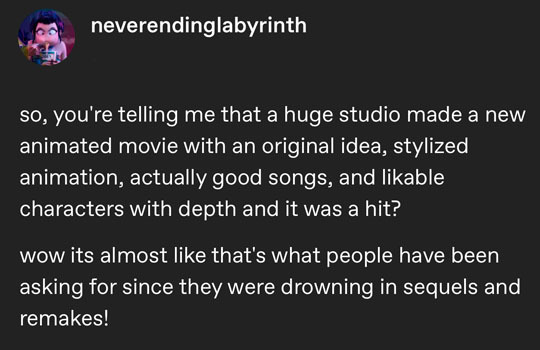
37K notes
·
View notes
Text

Just another reason to keep your cats indoors.
68K notes
·
View notes
Text

I dont think you're ready for the TAKE DOWN
18K notes
·
View notes











